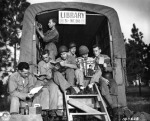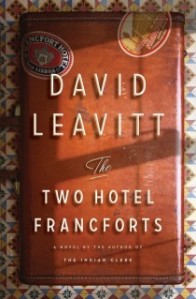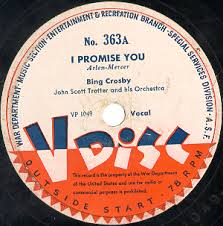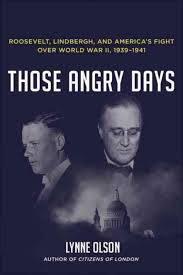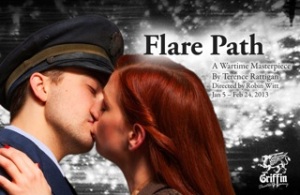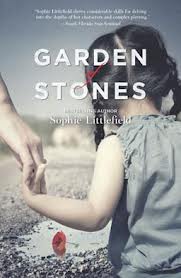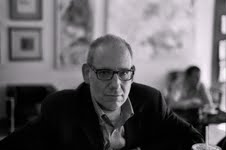
David Leavitt stopped by So Much So Many So Few to discuss his new novel, “The Two Hotel Francforts.”
This novel is so vividly about a specific time and place. In the movie “Casablanca,” there’s a scene early on where the refugees are gazing skyward and one says “The night plane to Lisbon.” But I don’t think there’s been a dramatic depiction, before this, of what went on once they got to Lisbon. Can you tell us a little about how you came to it?
You’re right: as a location, Lisbon during the War hasn’t been exploited nearly as much as, say, Paris or London. There was one movie set there—Lisbon Story—but it’s an obscurity. I still haven’t been able to track down a copy.
Before I started working on the novel, I’d never been to Portugal. I knew virtually nothing about Lisbon. I came to the city through an historical back door. In 2008 I was doing some research on the modernist French interior decorator and furniture designer Jean-Michel Frank, whose work I have always loved. Like many other Jews, Frank fled Paris in the spring of 1940. He arrived in Portugal in June, only to be shipped off (along with Elsa Schiaparelli) into residence forcée in the university city of Coimbra. Subsequently he appealed to Nelson Rockefeller, whose New York apartment he had decorated in 1939, for assistance in obtaining an American visa, but Rockefeller either could not or would not help him. Finally Frank got a visa for Argentina, at which point he was allowed into Lisbon, where he stayed for a few weeks in July. He spent three months in Buenos Aires (designing a lot of furniture for the Argentine company Comté) before he was finally granted the US visa that he had been denied in Portugal, at which point he sailed in New York. There he committed suicide in March 1941.
In its original incarnation, the novel was to be about Frank and his American lover, Thad Lovett, a fascinatingly weird character in his own right and, like me, a native of Palo Alto, California. Unfortunately I couldn’t make that novel work. Part of the problem was the unavoidable downward trajectory of Frank’s life from bad to worse to still worse to suicide. More significantly, as I tried to write that novel, I kept getting “stuck” in Lisbon. That is to say, Frank’s life both before and after Lisbon refused to take shape in my imagination. Lisbon itself wouldn’t give up the spotlight.
“Seeing” is a major theme in this novel — what the characters choose to see and what they choose to look away from. It begins quite literally, when one character steps on another’s glasses. Can you take us through the evolution of this blindness?
That’s a very interesting question. I think it all started with the pigeons. The first time I went to Lisbon, the aggressiveness of the pigeons on the Rossio astonished me. The idea of a pigeon attack as a sort of echo of an air raid stuck in my mind, eventually combining, somehow, with a pair of glasses being broken. Probably in the back of my mind was the famous scene from Strangers on a Train in which the strangling is filmed through the distorting lenses of the victim’s glasses….I suspect that what I’m exploring here is the impulse or desire to see the world through someone else’s eyes, and in particular to see the world through the eyes of a lover.
The other significance of the glasses: when Pete isn’t wearing them, the sharp lines that define his perspective (and his identity) blur. This allows him to behave in ways that he never would when he’s wearing them. Edward picks up on this, which is why the stealing or removal of Pete’s glasses becomes such a crucial move in the erotic games they play. But as the novel goes on, Pete realizes that he can’t afford (emotionally?) to compromise his own vision. The world in which he lives is too difficult and threatening. Hence his decision to end the affair with Edward is part of his realization that he can no longer sit back and observe the war passively. He has to take a more active role. He has to drive—and he can’t drive without his glasses.
Speaking of Pete and his driving, I wanted to ask about Pete’s resolute American-ness. He’s not just an American, he’s a Midwesterner. He’s not just a Midwesterner, he’s a salesman. And he sells no frou-frou, he sells cars. Until Dr. Gray appears, he’s really the only one with a real job, and with practical skills and knowledge (which he uses to get the dog safely onboard) but he’s so marginalized by the other characters. He’s like a car himself to them — a means to get somewhere or, more accurately, to get elsewhere.
That’s a good point. As the novel took shape, Pete’s job became more and more central to my conception of him. I had at first gotten the idea of making him a car salesman because so many emigres/refugees drove to Lisbon and so many of them drove American cars—mostly Buicks and Packards—which aroused my curiosity and led me to investigate the history of these brands. Gradually it started making more and more sense to me that Pete should be a salesman. I also liked the idea of selling a car as a kind of seduction—hence the scene in which Edward asks Pete to make his pitch to him.
To some degree, in creating Pete and Julia, I was drawing on certain couples I’ve met over the years in which one partner is the flightily mercurial artist and the other the breadwinner. The breadwinner provides the mercurial artist with financial and practical grounding. The artist brings color to his life. He (for the breadwinner is usually male) gains variety and richness of experience through the agency of the artist (usually female) so in a sense this kind of a relationship is a trade-off: each provides for the other. Though Julia is not an artist per se, I see her as having an artistic sensibility
Dr. Gray is magnificent as a character! And I love that she, the one who makes him see, is called “gray”, but enough of gray, current popular tastes in fiction being what they are. When she strides into the action, it’s so cinematic, it’s as though everything suddenly blooms into color a la The Wizard of Oz. .
I like Dr. Gray a lot. She is based in part on an English doctor I met in the nineties in Rome, Dr. Alberta Jeans. At the time Dr. Jeans was already in her eighties, which means that she must have gotten her medical degree at a time when few women did. Possibly she came to Rome during the war. I never had the chance to ask her before she died. In some ways Dr. Gray is a tribute to her memory.
As I entered into what I will call, for lack of a better term, the last “movement” of the novel, I realized that I really needed to introduce a new character—a very down-to-earth character who could take Pete out of the claustrophobic realm that Lisbon has become for him and provide him with what we might now call a “reality check.” For reasons I can no longer remember, I decided to make this character a woman doctor on her way into the war to provide first aid. Through subsequent research I discovered that the most likely route that such a doctor would take would be through the Quaker Relief movement. Hence Dr. Gray was born.
Usually when I write I know from the beginning where a story is going to end. I didn’t in this case until very late in the process. As I entered the last phase, I felt fairly certain that Edward and Pete would never be able to make a go of their relationship, not because they were both men, or because either was really “trapped” in his marriage, but because Edward’s passivity would prove an intolerable obstacle. Given that my novel takes place during the war, it seemed to me essential that one of the characters should break out of the Lisbon bubble and do something. Pete, I realized, was that character. He only needed someone (in this case Dr. Gray) to wake his conscience.
